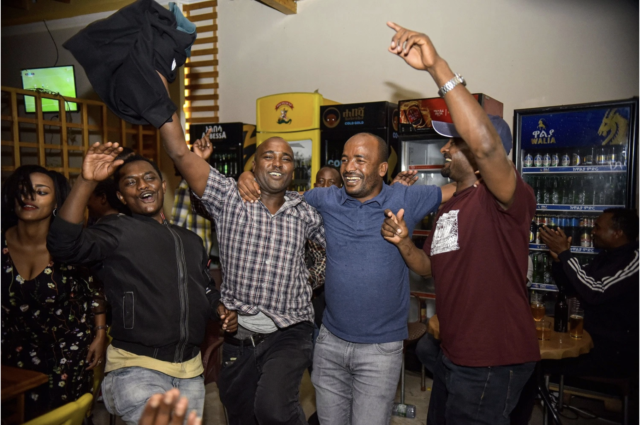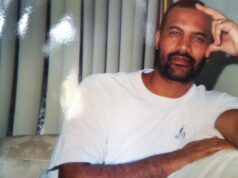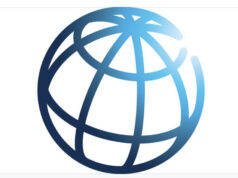foreignpolicy || Ethiopian Prime Minister Abiy Ahmed won the Nobel Peace Prize this year for his efforts to broker peace in the Horn of Africa. But he now faces another tangled problem—the growing demands of numerous Ethiopian ethnic groups for their own statehood at the same time that he is trying to move the governing political party, the Ethiopian People’s Revolutionary Democratic Front (EPRDF), toward a unitary party, away from the ethno-regionalism that has governed the country for nearly three decades. In forging a vision for Ethiopia’s future, Prime Minister Abiy must contend with the implications of ethno-federalism for his ideology, known as medemer, meaning “synergetic unity” in the Amharic language.
An overwhelming victory in a referendum for statehood for the Sidama region and similar petitions from a number of other ethnic groups suggest that there is a demand for a greater devolution of power. Despite this pressure for more ethno-federalism, the governing party, a coalition of four ethno-regional parties that has been in power since the early 1990s, is shifting its ruling style away from the states and toward a single, unitary party to be called the Ethiopian Prosperity Party (EPP). These tensions could reshape Ethiopian politics—especially with elections coming up in May.
Ethiopia is officially divided into nine regional states based on ethnicity and language group and two administrative states, including the capital, Addis Ababa. There are more than 90 ethnic groups identified in the Ethiopian census, and none constitutes a majority on its own—the largest of these groups, the Oromo, make up roughly a third of the country’s population. The EPRDF was established as a coalition of four parties representing some of the larger ethno-regional constituencies, including the Oromia, Amhara, Tigray, and the Southern Nations, Nationalities, and Peoples; the EPRDF’s power was complemented by the influence it exerted over the five other ethno-regional parties.
Ethno-federalism was adopted after the war by the EPRDF as a means of addressing the “question of nationalities” that had motivated decades of student activism and insurrection. This style of rule was also a reaction to a widely held frustration that, under both the imperial regime and the military dictatorship, the country’s political elite were disproportionately Amhara. In the transitional charter and the subsequent constitution, the Ethiopian researcher Ermias Tasfaye writes, “Some ethnic groups (‘nations’) such as Afar, Amhara, Oromo, Somali and Tigray were thus granted regional statehood, while other often smaller groups (‘nationalities’ and ‘peoples’) were lumped together into multi-ethnic regional states—notably the southern NNPs .”
The allocation of statehood to nations, nationalities, and peoples, according to Tasfaye, was structured in a fashion that encourages “potentially for increased autonomy.” In the 1995 constitution, Article 39 asserts that, “Every Nation, Nationality and People in Ethiopia has an unconditional right to self- determination, including the right to secession,” suggesting that there were constitutionally enshrined ways for that composition to change.
The Sidama referendum comes more than a year after leaders of the Sidama ethnic group (for which the zone is named) petitioned the government to hold such a referendum, in line with a process for statehood delineated by the country’s 1995 constitution. The referendum was supposed to have been organized by July 17, but the failure of the government to organize the referendum in time resulted in a number of violent clashes that claimed at least 17 lives. Initial reports suggest that Hawassa, the current state capital of the Southern Nations, Nationalities, and Peoples’ Region (SNNPR) and a lucrative tourist destination, will be the capital of the new Sidama state.
The Sidama are about 4 percent of Ethiopia’s total population but are the largest ethnic group—though still only about 20 percent—of the makeup of SNNPR. The results of the referendum, released on Nov. 23, showed an overwhelming degree of support for statehood among voters—98.5 percent voted in favor of statehood.
The Sidama referendum may have set a precedent in SNNPR. The region is made up of dozens of ethnic groups, among which at least 10 others have also petitioned for statehood. The uneasiness of the amalgamation of ethnic groups in SNNPR goes back to the transitional period in the early 1990s, after the EPRDF defeated the military government but before the 1995 constitution was adopted. Some fear that the Sidama bid for statehood could lead to a cascade of such requests, fracturing SNNPR and reshaping the country’s political landscape.
Others fear that, though the November Sidama referendum was largely peaceful, the process of establishing the new region will result in ethnic discrimination or violence.
Others fear that, though the November Sidama referendum was largely peaceful, the process of establishing the new region will result in ethnic discrimination or violence. One Hawassa resident said, “I’m afraid that the Sidama will come and hurt us … they will take all the jobs and even if you file a complaint it will go unheard as you will be complaining to one of them,” according to Reuters.
Since Abiy took office, violence between ethnic militias has presented a serious challenge to the country. According to the Armed Conflict Location and Event Data Project, 70 instances of inter-communal violence have resulted in more than 500 reported deaths since Abiy was sworn in on April 2, 2018. Over the same time period, there have been nearly 60 instances in which communal militias have targeted civilians, resulting in more than 300 additional reported fatalities. This violence has contributed to the displacement crisis in the country. According to the International Displacement Monitoring Center’s midyear report, in the first half of 2019 violence among ethnic militias resulted in the displacement of 140,000 people in Oromia and 100,000 people in Amhara alone.
Violence along ethnic lines has also affected Ethiopia’s political elites. In June, the president of the Amhara Region and two of his associates were assassinated during what the prime minister said was an attempted coup. The man behind the attack, Brig. Gen. Asaminew Tsige, was the region’s security chief and was affiliated with Amhara ethnic hard-liners. Tsige was killed during a confrontation with security forces. On that same night, in an attack likely connected to the first, Seare Mekonnen, a Tigrayan and the chief of staff for the Army was assassinated by his bodyguard.

























